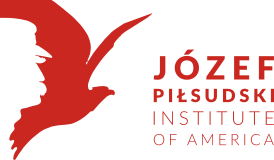Powrót
Teczka: 701/1/12
| Archiwum | Instytut Józefa Piłsudskiego w Ameryce |
|---|---|
| Zespół | Archiwum Józefa Piłsudskiego |
| Teczka | Bronisław Piłsudski korespondencja i notatki, fragment maszynopisu "Dziennika" Bronisława Piłsudskiego z lat 1882-1883, spisanego w 1918 r., chronologia życia Bronisława Piłsudskiego w jęz.japońskim |
| Opis teczki | 1912 1984; akta luźne; dokumentacja aktowa; maszynopis, rękopis; en |
Opis dokumentu
| Tytuł | Prace nad restauracją zapisów języka Ainów na bębnie woskowym |
|---|---|
| Tytuł alternatywny | Bronisław Piłsudski na Sachalinie |
| Przedmiot | Piłsudski Bronisław |
| Typ | Artykuł |
| Opis | Opis żmudnej pracy związanej z odrestaurowaniem zapisów rdzennej mowy Ainów na bębnie woskowym, sporządzonym przez Bronisława Piłsudskiego. |
| Streszczenie | Translation of the document: The Pilsudski’s Wax Tube July 16, 1983 The wax tube transferring from Warsaw Poland to the Hokkaido University Japan involved many visible and invisible corporations. Professor A F Mayevich arranged for the tube to pass through Poland customs. NHK (Japan Broadcast Association) carried it out to Paris with corporations of the Ministry Foreign affairs of Japan and Japan Air Line voluntarily transported it from Paris to Narita Japan. First they faced a problem how to make the funds for this wax tube restoration project. A doctor living in Sapporo, very interested in Karafuto Ainu language research, donated some founds for the project. The Dental department of Hokkaido University offered their special dental technology for the making tooth marks. Mr. Kyusaku Kato (the director of National Folklore Museum) on behalf of Japan ICRSP started the project with those strong support and back up. 39 participants from the Hokkaido University, Otaru Commercial University, Department of Education of Hokkaido University and National Folklore Museum joined from Japanese ICRSP and Mr. Adam Miskyvich and 10 persons from the University joined to the project from Polish ICRSP. The most difficult step was to invent sound engineering for the restoring “Karafuto Ainu language” of the wax tube. This was recorded by only human voice energy about 80 years ago so it holds small amount of information in the grooves over the tube. It is very heard to find out the original voice sounds even though using the modernt technology, converting light reflections to electric signal, because of the recording was not only very rough but also the wax tube eroded with mold. Professor Toshimitsu Asakura (Optical metrology) and Assistant professor Tohru Ifukube (Institute of Applied Electricity Hokkaido University) fully realized that finding out original voice sounds needs mass of computation work. In the first step of this reproducing projects was to clean out the mold from surface the tube. Professor Toshimitsu Asakura found an Art restorer in Tokyo and asked him to remove the mold from the surface by hands using a microscope. After they cleaned out the surface, the Dental department of Hokkaido University made a model of the tube using their special dental technology. Then next step was making a duplicate that improved the precision of the raw tube. They were trying two methods of restoring the voice sounds. One was Light Cross Section method which takes the record of the information using the light's refractions with the rays of light from 45 degree by a solid camera. The other is the stylus way, directly follow groove with needle. It was immensely interesting how close they could reach the first voice. Professor Jiro Ikegami, department of literature in Hokkaido University says sooner or later many linguists will start to decipher and transcribe of the voice and also he requests help of the Ainu peoples who returned from Karafuto. If the reproducing Pilsudski’s wax tube made success, Karafuto Ainu language, which has been the older language form than that of Hokkaido Ainu, using methodical and comparative studies will be elucidated and studied in the relation with Siberian regional dialects, music and culture. (Translator's note: ICRSP is organized by Linguists, Folklorists, Music and Electronics scholars of Japan and Poland.) Translated by Shizuko Kato, 16 July 2011 |
| Daty | 1983-07-16 |
| Języki | en |
| Data dokumentu | 1983-07-16 |





